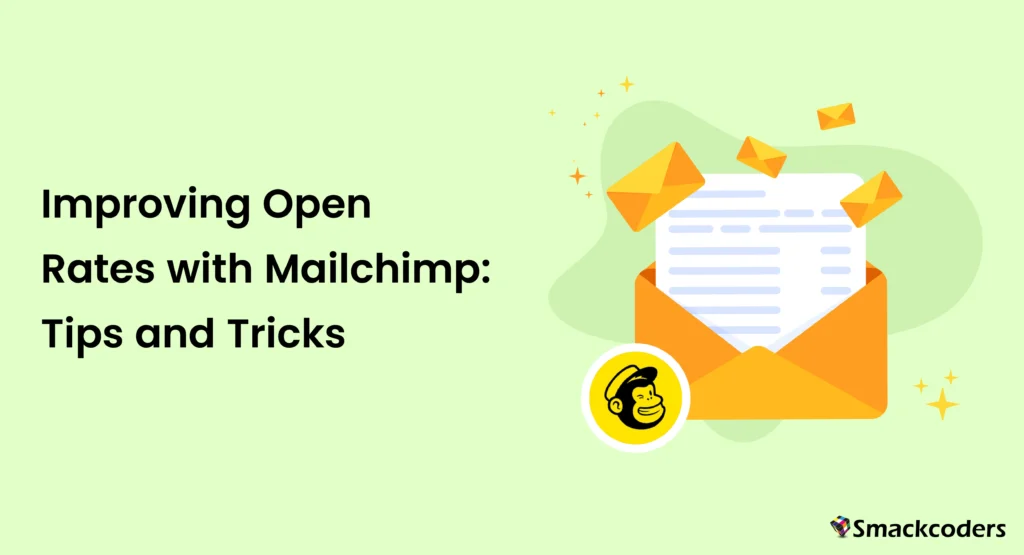
Table of Contents
In the competitive world of email marketing, achieving high open rates is a critical component of success. An open rate, the percentage of email recipients who open a specific email, is a key metric that indicates how well your campaigns are performing. Improving your email open rates not only enhances engagement but also leads to higher conversion rates, ultimately driving more revenue for your business. This comprehensive guide will provide you with practical tips and tricks to optimize your Mailchimp campaigns, ensuring your emails are not just opened but also acted upon.
Importance of Email Open Rates
Email open rates are a fundamental measure of your campaign’s success. A higher open rate indicates that your subject lines are compelling and your emails are reaching an interested audience. This metric sets the stage for subsequent actions such as clicks, conversions, and sales. Moreover, high open rates can improve your email deliverability as ISPs (Internet Service Providers) recognize your emails as valuable to recipients, reducing the likelihood of your emails being marked as spam.
Impact on Business Goals:
- Increased Engagement: Higher open rates mean more people are engaging with your content.
- Enhanced Brand Awareness: Regular interaction helps people remember your brand.
- Better ROI: More opens can lead to higher click-through rates and conversions, improving your return on investment (ROI).
Overview of Mailchimp for Email Marketing
Mailchimp is a powerful email marketing platform that offers a suite of tools designed to help businesses of all sizes improve their email marketing efforts. Known for its user-friendly interface and robust features, Mailchimp allows marketers to create, send, and analyze email campaigns effectively. Key features include customizable templates, advanced segmentation, automation workflows, and detailed analytics, making it easier to manage and optimize your email marketing campaigns.
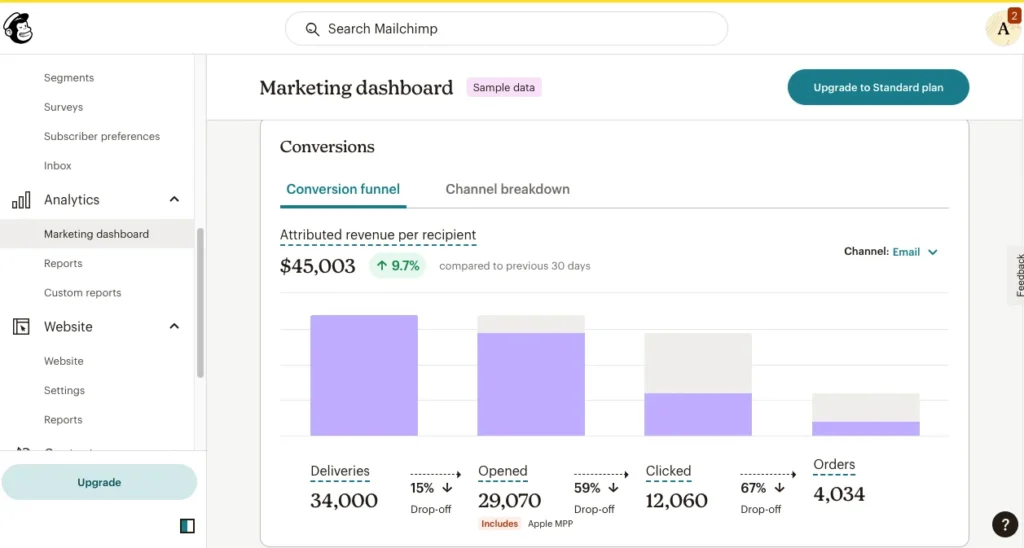
Key Features of Mailchimp:
- Drag-and-Drop Email Builder: Easily create professional-looking emails without any coding skills.
- Segmentation and Personalization: Send targeted emails to specific audience segments.
- Automation: Create automatic email sequences that are triggered by user actions.
- Analytics and Reporting: Monitor and evaluate your email campaigns’ effectiveness in real-time.
Factors Influencing Email Open Rates
Several factors can impact your email open rates, including:
Subject Lines
The first thing recipients see, subject lines play a crucial role in whether an email is opened. A compelling subject line can grab attention and entice recipients to open your email.
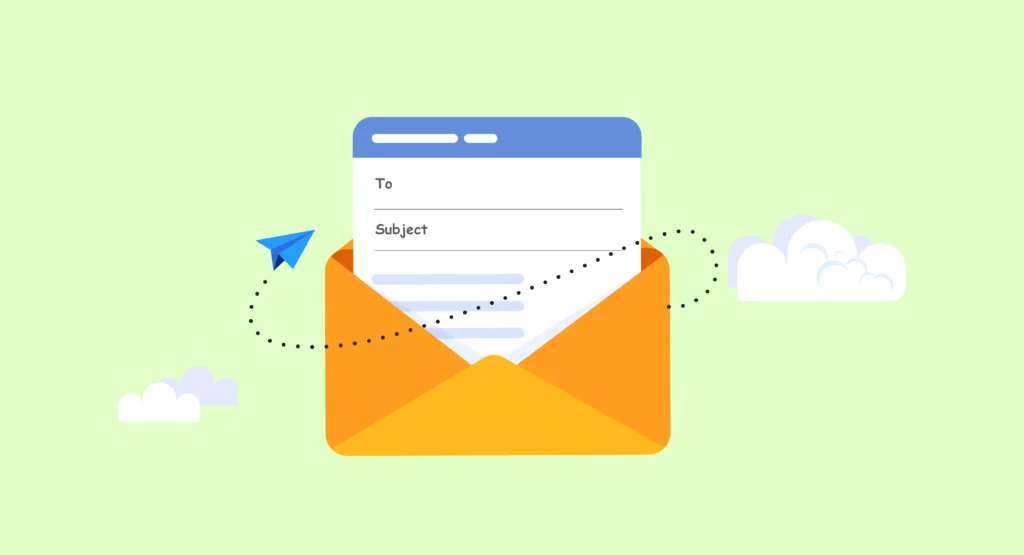
Send Times
Timing can significantly affect open rates. Sending emails at the right time can increase the likelihood that your message will be seen and opened.
Personalization
Emails that feel personal and relevant to the recipient are more likely to be opened. Personalization can include using the recipient’s name, addressing their specific interests, or referencing their past behavior.
List Quality
A clean and engaged email list will result in higher open rates. Regularly updating and maintaining your list ensures that you are sending emails to people who are interested in your content.
Crafting Irresistible Subject Lines
Subject lines are the gateway to your emails. Coming up with intriguing subject lines takes imagination and audience knowledge. Here are a few pointers for creating attention-grabbing topic lines:
Tips for Compelling Subject Lines:
- Keep it Short and Sweet: Aim for 6-10 words to ensure the subject line is fully visible on most devices.
- Create Urgency: Use words that create a sense of urgency or importance, such as “limited time offer” or “ending soon.”
- Personalize: To make the email seem more relevant, provide the recipient’s name or other private information.
- Avoid Spam Triggers: Steer clear of words that might trigger spam filters, such as “free,” “discount,” or excessive use of exclamation points.
Examples of Effective Subject Lines:
- “Don’t Miss Out on Our Exclusive Offer!”
- “John Here’s Your Personalized Recommendation”
- “Last Chance: 50% Off Ends Tonight!”
Personalizing Your Emails
Personalization goes beyond just using the recipient’s name. Tailoring content to their preferences and behaviors increases relevance and engagement. Use Mailchimp’s personalization tags and merge fields to make your emails feel unique to each subscriber.
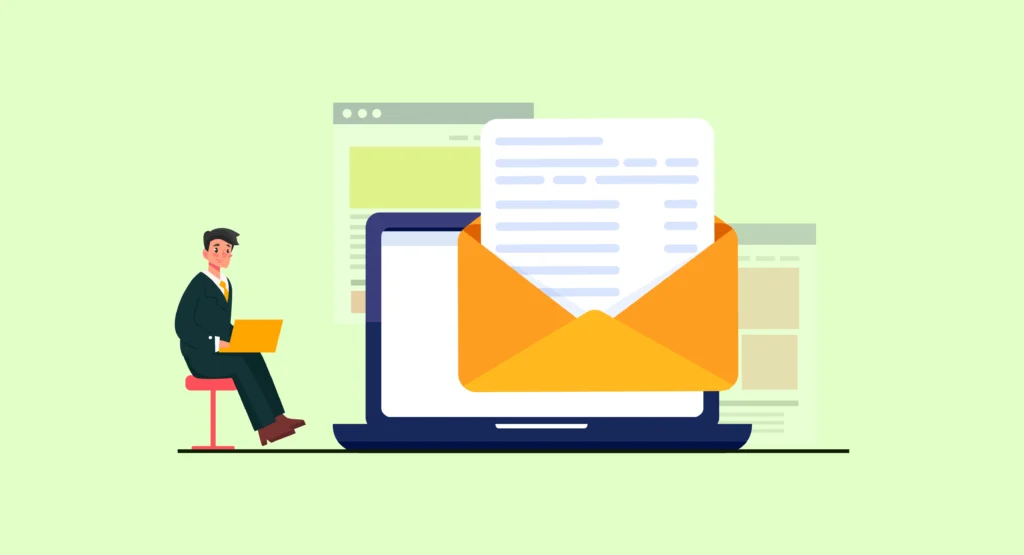
Strategies for Effective Personalization:
- Behavioral Targeting: Send emails based on user actions, such as past purchases or website visits.
- Dynamic Content: Use dynamic content blocks to show different content to different segments of your audience.
- Personalized Recommendations: Suggest products or content based on the recipient’s past interactions with your brand.
Optimizing Send Times
Timing can make or break your email campaigns. Use Mailchimp’s data insights to determine the best time to send your emails. Generally, mid-morning during weekdays tends to yield higher open rates, but the optimal time can vary based on your audience.
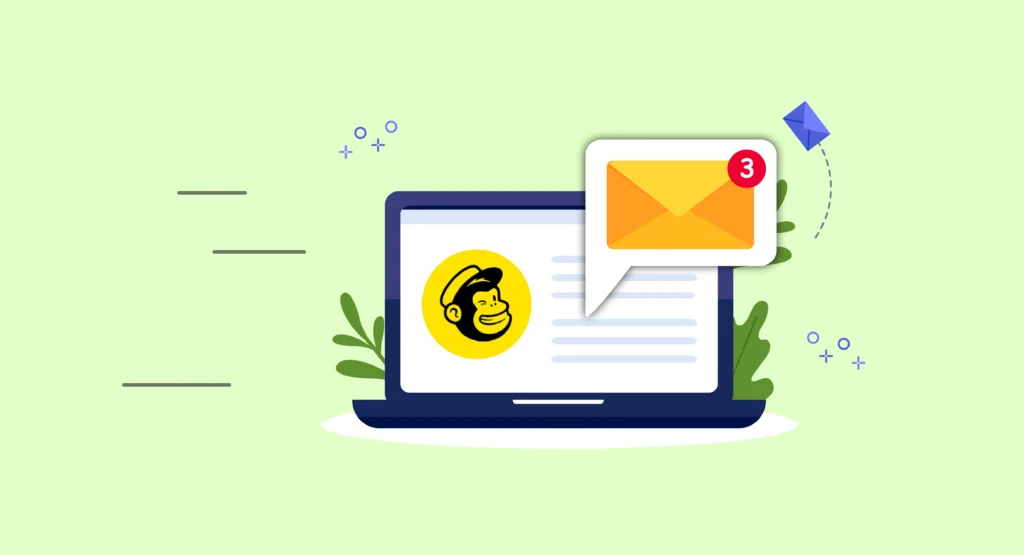
Best Practices for Send Times:
- Analyze Past Campaigns: Look at the open rates of past campaigns to identify trends.
- Consider Time Zones: If you have a global audience, segment your list by time zone and schedule emails accordingly.
- Test and Adjust: Experiment with different send times and adjust based on performance.
A/B Testing Email Campaigns
You may test several email elements with A/B testing to determine which ones perform the best. Test subject lines, send times, content, and calls to action. Make use of the learned lessons to improve subsequent campaigns.
How to Conduct A/B Tests in Mailchimp:
- Choose Your Variable: Decide what element you want to test, such as subject lines or send times.
- Create Variations: Develop two or more versions of the email with slight variations.
- Send to a Test Group: Send the variations to a small segment of your list.
- Analyze Results: Determine which version performed better and use that version for the rest of your list.
Cleaning and Maintaining Your Email List
A clean email list ensures better open rates. Delete invalid email addresses and inactive subscribers on a regular basis. Use double opt-in methods to confirm subscriptions and keep your list engaged and active.
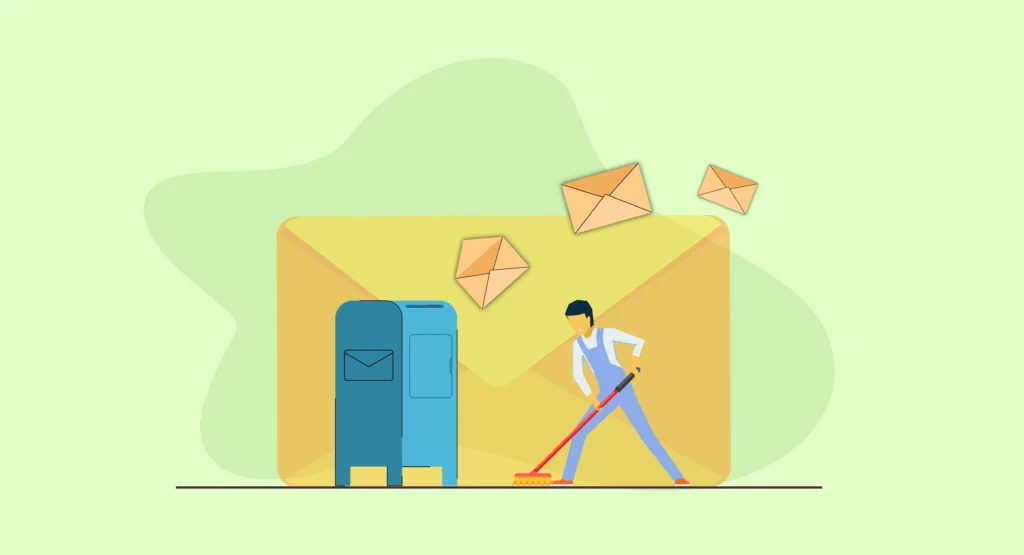
Strategies for Maintaining a Healthy List:
- Regular List Cleaning: Periodically remove unengaged subscribers.
- Double Opt-In: Require new subscribers to confirm their email address to ensure they are genuinely interested.
- Re-Engagement Campaigns: Send campaigns to inactive subscribers to try to re-engage them before removing them from your list.
Creating Engaging Content
Your content needs to be engaging to keep readers interested. Use a mix of text, images, and videos to create dynamic content. Ensure your emails are visually appealing and provide value to the reader.
Tips for Creating Engaging Content:
- Use Compelling Images: High-quality images can capture attention and enhance your message.
- Include Clear CTAs: Make it easy for recipients to take the desired action with clear and compelling calls to action.
- Provide Value: Offer content that is valuable and relevant to your audience, such as tips, discounts, or exclusive information.
Leveraging Segmentation for Targeted Campaigns
Segmentation allows you to send targeted emails to specific groups within your list. Use demographic data, purchase history, and engagement metrics to create segments. Targeted emails are more relevant and have higher open rates.
How to Segment Your Email List:
- Demographics: Segment by age, gender, location, or other demographic factors.
- Behavior: Segment based on past purchases, website behavior, or email engagement.
- Preferences: Allow subscribers to choose their preferences and segment based on their interests.
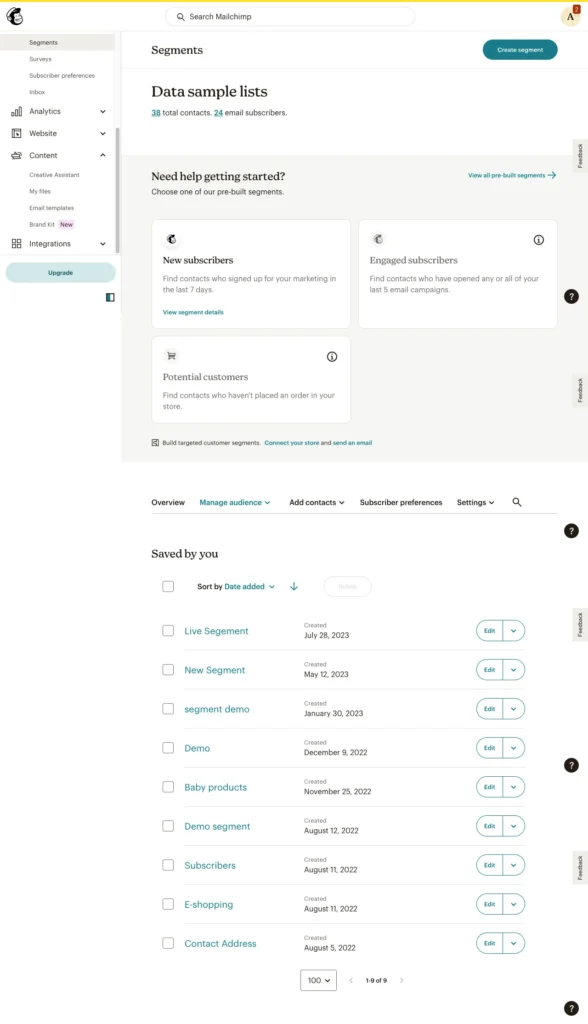
Implementing Email Automation
You can save time and guarantee that your emails are sent at the best times by using automation. Use Mailchimp’s automation features to set up welcome emails, drip campaigns, and re-engagement emails.
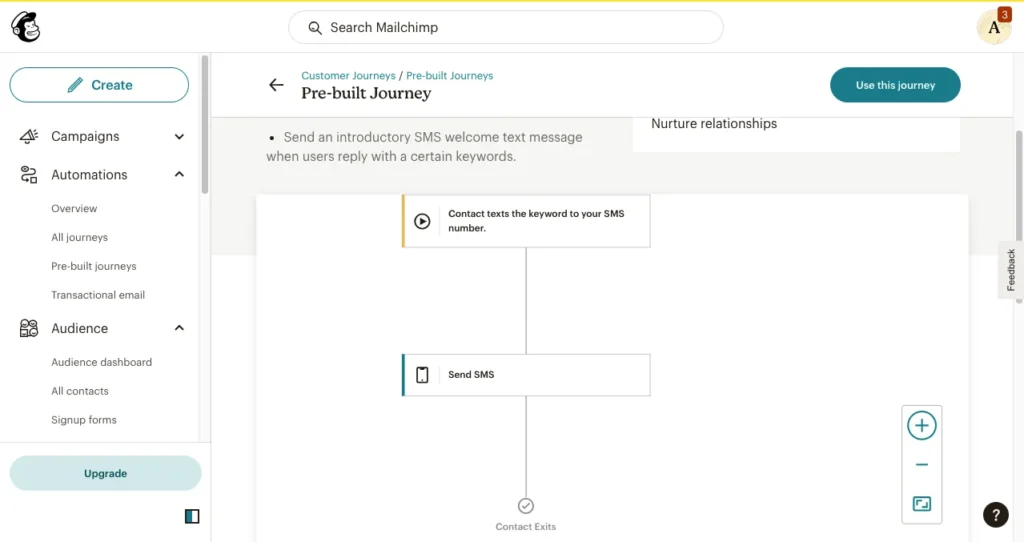
Benefits of Automation:
- Consistency: Ensure emails are sent consistently without manual intervention.
- Timeliness: Send emails based on user actions or specific triggers, ensuring they are timely and relevant.
- Scalability: Easily manage intricate campaigns and big lists.
Monitoring and Analyzing Performance
Keep a close eye on the effectiveness of your email campaigns by using Mailchimp’s analytics tools.. Track open rates, click-through rates, and conversion rates to understand what’s working and what needs improvement.
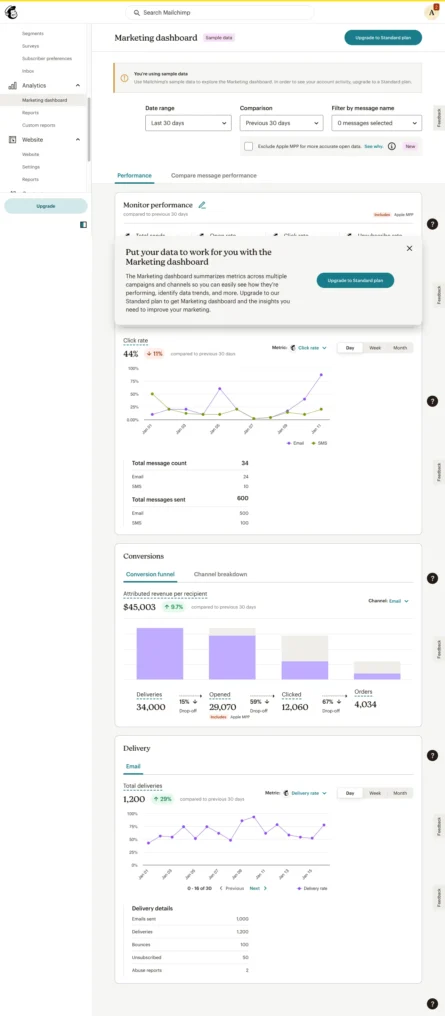
Key Metrics to Track:
- Open Rate: percentage of email recipients that click through.
- Click-Through Rate (CTR): percentage of recipients that open links in emails you send them.
- Conversion Rate: Percentage of recipients who take the desired action after clicking through your email.
Compliance and Best Practices
Ensure your email marketing practices comply with laws such as the CAN-SPAM Act and GDPR. Always include an unsubscribe link and respect opt-out requests. Following best practices not only keeps you compliant but also builds trust with your audience.
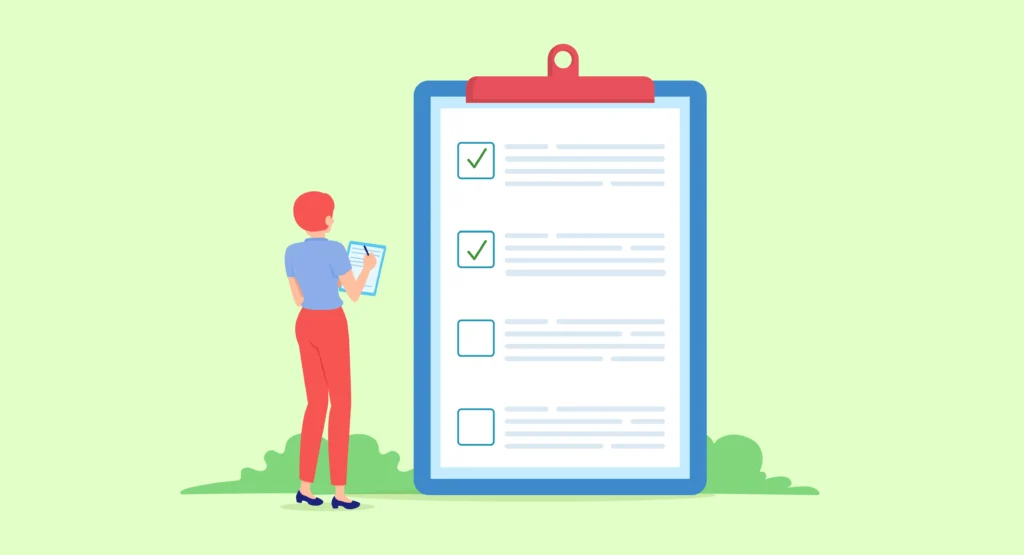
Compliance Tips:
- Include an Unsubscribe Link: Give receivers of your emails an easy way to unsubscribe.
- Provide a Physical Address: Include your business’s physical address in your emails.
- Obtain Consent: Ensure you have permission to email your subscribers, particularly if you are subject to GDPR regulations.
Conclusion
Improving your Mailchimp email open rates requires a combination of strategic planning, personalization, and continuous optimization. By following these tips and leveraging Mailchimp’s powerful features, you can enhance your email marketing efforts and achieve better engagement and conversion rates.
FAQs
What is a good email open rate?
A good email open rate varies by industry, but generally, a rate above 20% is considered good.
How can I improve my Mailchimp email open rates?
Focus on crafting compelling subject lines, personalizing your emails, optimizing send times, and regularly cleaning your email list.
What are some best practices for email marketing?
Ensure compliance with legal requirements, segment your audience for targeted campaigns, and continuously monitor and optimize your email performance.
How does Mailchimp help with email personalization?
Mailchimp offers various tools, such as merge tags, segmentation, and automation, to personalize your email campaigns.
Why is email list cleaning important?
By delivering emails to readers who are interested in your content, you can lower bounce rates and increase open rates by cleaning your email list.
Which typical errors in email marketing should you avoid?
Avoid using misleading subject lines, neglecting to segment your audience, sending emails too frequently, and failing to personalize your content.
